Updated: July 4, 2016
Fiat 500 is a quintessential cultural icon. Alongside Mini, Beetle and a few other legendary cars, it's one of those vehicles that has created a new trend in the automotive world, and then lived on to become etched in the public's memory, long after the last model has rolled off the production line. I chirped most happily about this way back in 2006, in one of the very first articles on Dedoimedo, and announced the upcoming release of the new Fiat 500 in the back-then future year of 2007. Fast forward a bunch of years, and I'm driving one.
Reviving classics is very tricky. It's a hit or miss game, and even though you can play the nostalgia game with quite a bit of leeway, i.e. Star Wars and friends, at some point, people may realized you've just sold then a product based on a fifty-year-old idea, and it might not work. In fact, if you look at the aforementioned Mini or Beetle, they sure don't look like they have that olden charm. Can Fiat 500 pull it off, though?

Nostalgia reincarnate; image credits Fiat Press.
More about our little model (...altrimenti ci arrabbiamo!)
The original Cinquecento had a modest 500cc engine. The one we have at our disposal is known as the S model, and if you think the letter indicates a sporty attitude, you are mistaken. It stands for Start&Stop, adding a would-be fuel-saving feature to the this tiny urban commuter. The engine remains the standard Fire 1.2-liter inline-four atmospheric petrol, developing a very humble 68 HP and just 102 Nm of torque. Consequently, the time it takes to reach the triple digit mark is 12.9 seconds, and the top speed is about 160 km/h. Then again, this car is designed to be nimble and frugal in town.

The powers that be. 69 of them, to be exact.
The equipment level is very generous. The particular test model had the S design, which the Fiat itself ostentatiously labels as Stylish, Sexy and Seductive. To be fair, it does come with a bunch of lovely details, including sporty spoilers, side skirts and rims, and decals. Apart from the triple-S flair, the car comes with Pop Star level of trim, which includes aircon, electrically powered windows and mirrors, radio with USB and AUX, media controls on the steering wheel, glorious 15-inch alloys and a wide tailpipe, plus satin chrome finish and red stitching all over the cabin. On the other hand, the chunky, flat-bottomed racing steering wheel can be adjusted only for height, no reach, and that's rather annoying. Safety is fairly good with seven air bags, ABS, ESP, and very decent crash ratings.
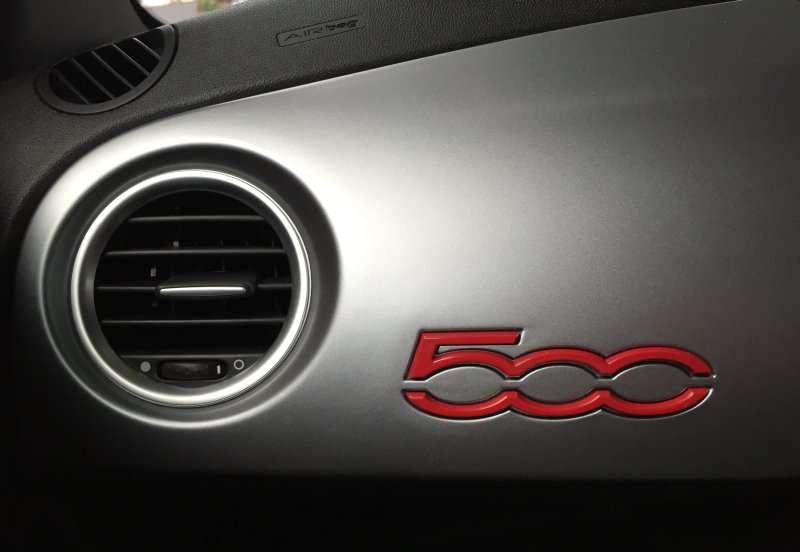
Lovely design.
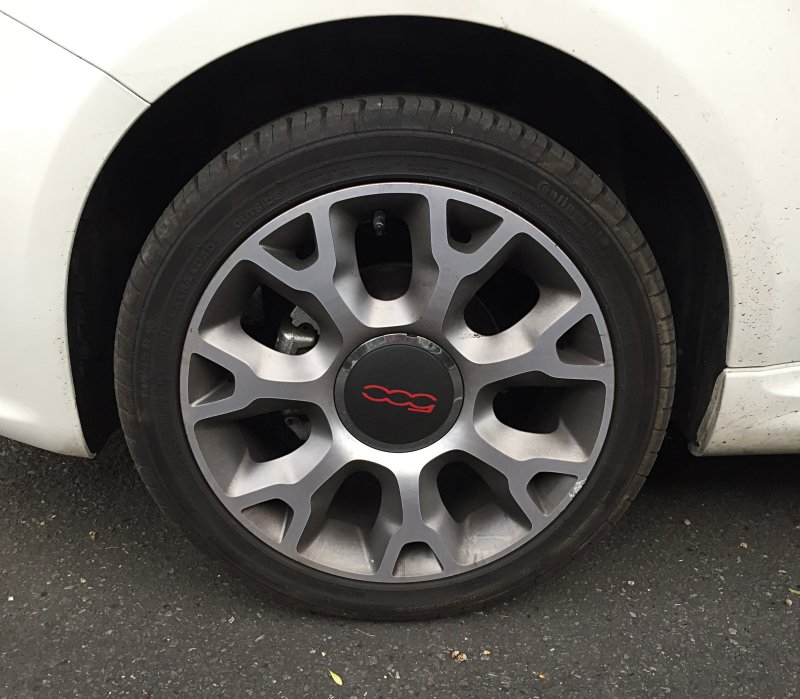
The alloys are very cool.
The recent 2016 facelift also adds more electricity into the cabin, LED, and some other cool details, which were absent from my test car. Parking sensors are included, although they are probably ever so slightly redundant in the car that's just 3.5 meters long.
However, this is a mere start - not stop. Hi hi. With more than half a million combinations of trim, Fiat 500 is probably the most customizable car in the world. The list of options and features is endless, and you will rarely see two cars that are absolutely identical, especially on the inside. This makes absolute sense, because the 500 is mostly aimed toward urban drivers, younger folks and ladies, and the flair and uniqueness have their extra selling appeal. Compared to Opel Adam, another funky little city car, Fiat 500 leads with far more color and variety.
The looks, or in Italian, estetici esternali (la vita com'e)
This car shines. It's a beautiful little box on wheels, with retro design clues everywhere. But rather than looking old yet garish or forced, Fiat 500 comes across as elegant and flamboyant and nostalgic all at the same time. You do not share the same emotion when you gaze at a typical Mini, which just feels Victorian steampunk, or the Beetle, which brims with bubbly shaped hipster overdose. The car is rounded and soft and cool, and you can appreciate the Italian art.
It looks great no matter how you focus your camera. This is one very photogenic car. The proportions are just right. The devilish combo of old and new is perfectly balanced. If you could time-shift the new Fiat 500S, the people of the 60s, apart from the shock at not having an ashtray in their car, would most likely not be too surprised by the modern model.
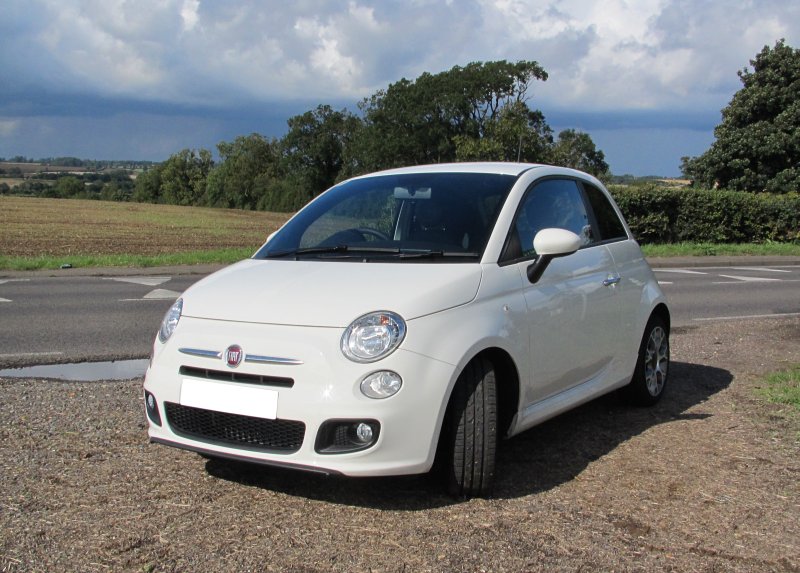
The style is undeniable.
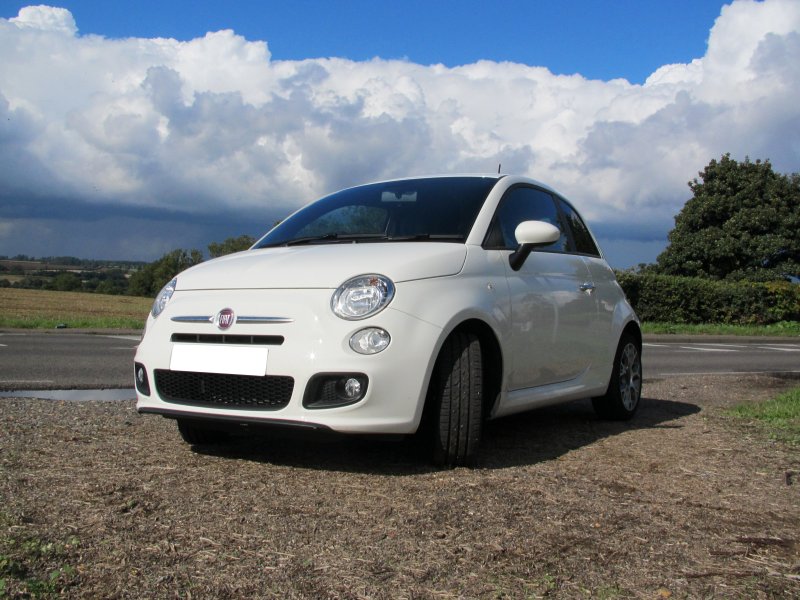
Even from a lower angle.
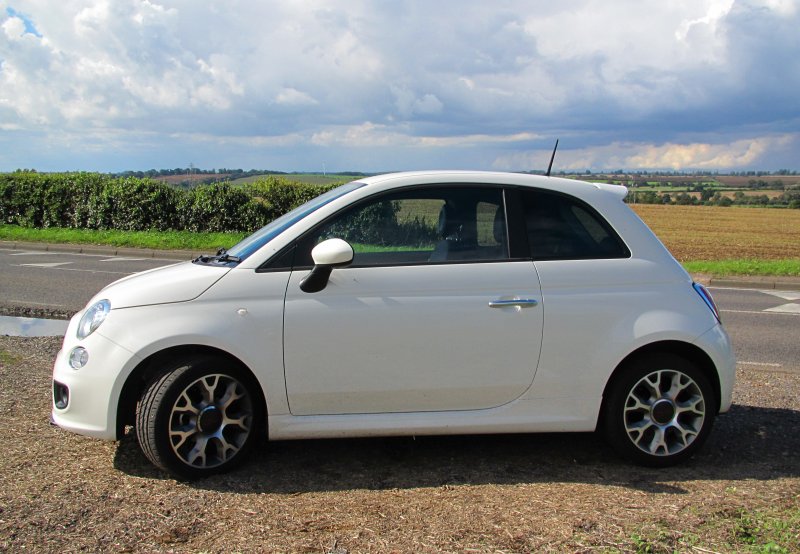
Or side angle. Or any angle.
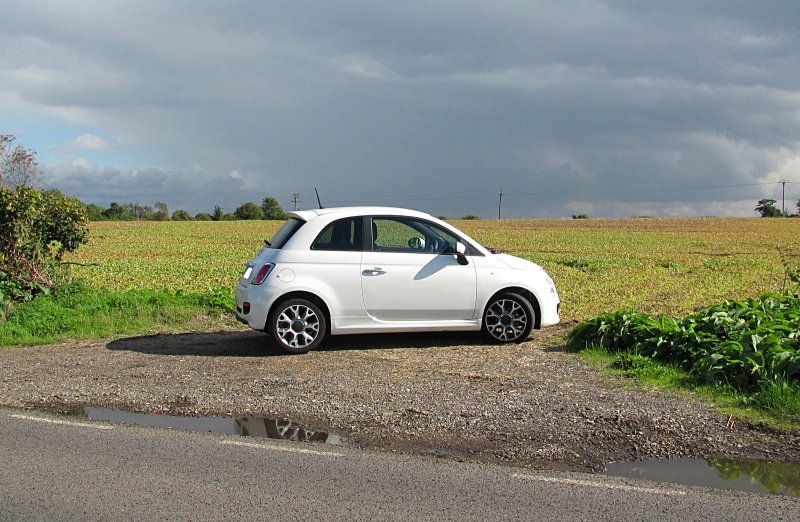
Looks ideal for countryside trips.
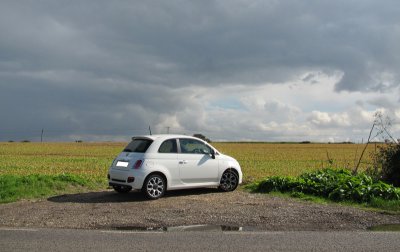
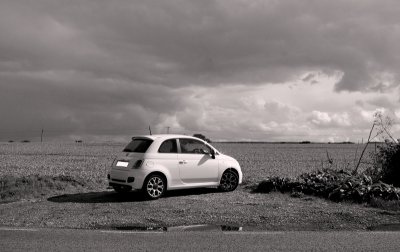
Artistique.
The back end also scintillates with energy and detail. Well, almost too much. You get a plethora of sporty details that do not reflect the actual displacement. The rear bumper has that distinct look that speaks drag and downforce without ever coming close to the end of the aerodynamic envelope. The flattened oval exhaust is another element that promises tons of raw power, even when there's none to be found. Still, they ought to please the owners, even if it's just for show.
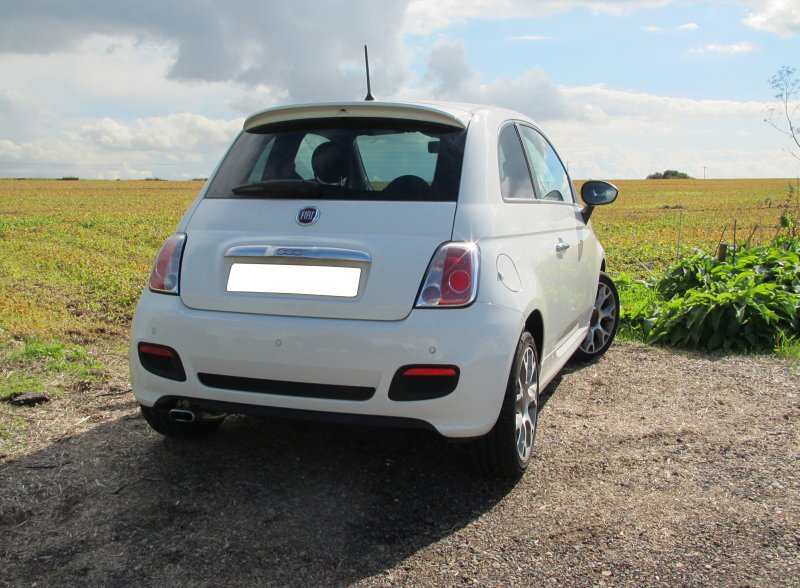
Hidden tiger, crouching kitten.
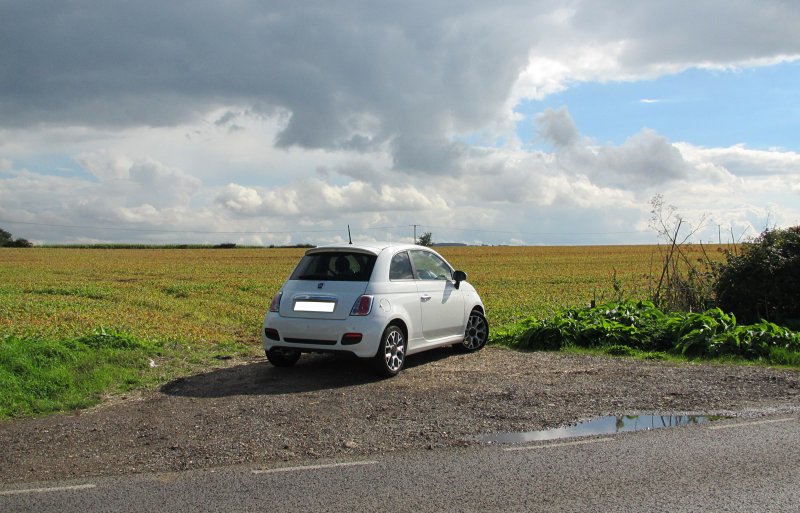
Zoomed out for dramatic effect. Looks neat.
Interiori (amazzo il tempo provando con l'auto)
Good looking, again. Very retro. Rounded angles, shiny faux-metal plastic. If you are used to German cars, you will always have that moment or three of wonder looking at a typical French or Italian design. Softer, busier, but not necessarily ugly. Far from it. Fiat 500 does a very good job of offering you the 50s cuisine in a modern wrapping. In comparison, say Mini comes across as a submarine helms station with a hundred different gages.
The buttonage is easily accessible and 100% old school. The gear knob is cool, with the combination of leather, shiny metal and red color. Whoever conceived this car had a very good sense of aesthetics and time. How do you create something that transpired fifty plus years of heritage without looking crass, over the top, or just plain ugly? The answer is, Fiat 500.
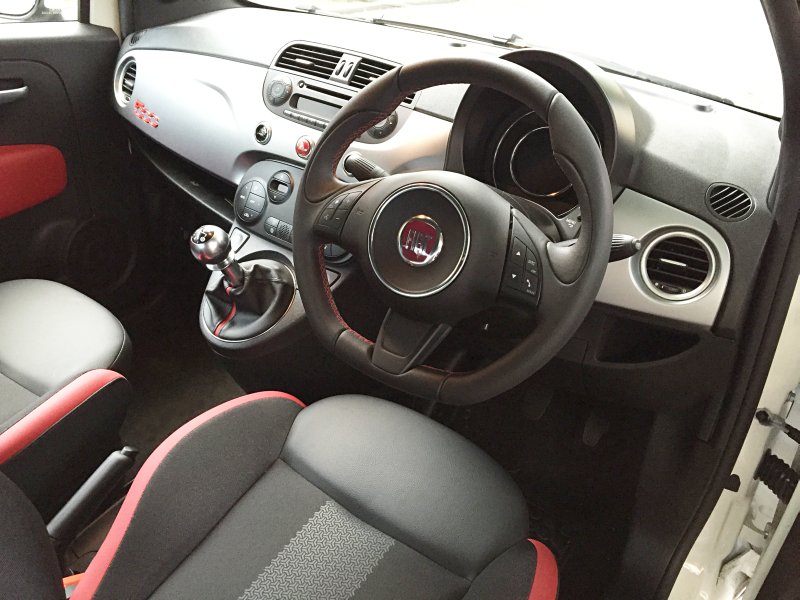
The steering wheel is on the wrong side again. I apologize.
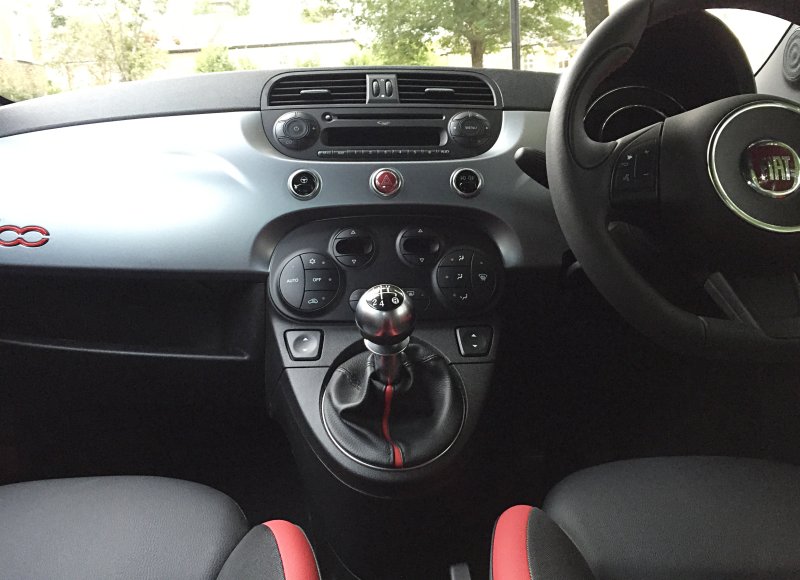
Exceptionally well made.
Stylish does not mean ergonomic, though. For all the color and excitement, Fiat 500 has a poorly designed cabin, from the human perspective. The seats are too short, and they stab into the lower thighs. Anyone over 1.75 m will not find it a comfy work environment. The front seat passenger will spend the journey with their feet folded or bent at a funny angle, because the wheel arch digs into the cabin, and the footwell is way too shallow.
Not being able to adjust the steering wheel means you will not be able to find the best position. Our average height female test driver complained that she was banging her knees against the bottom of the column. She also felt the steering wheel was way too big for the size of the car. In fact, it is huge. I guess it's designed that way to aid ladies with parking and maneuvering through narrow city streets, but it still does not make too much sense.
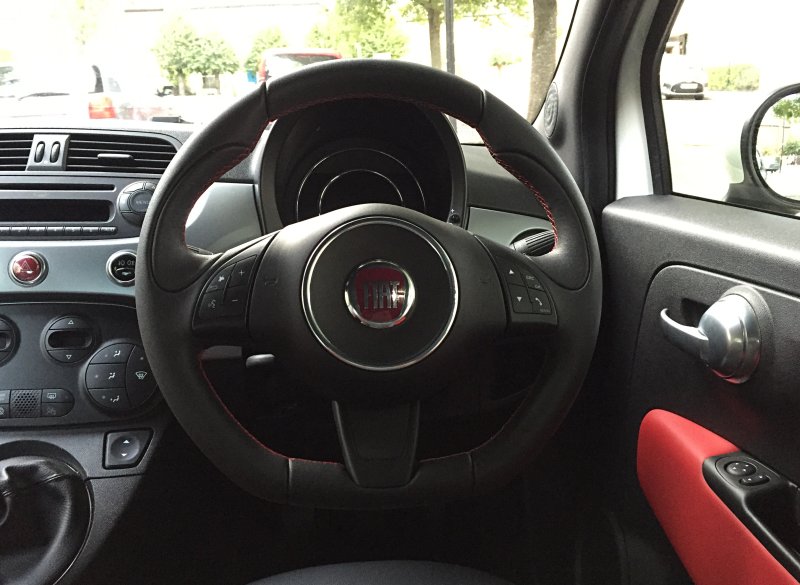
The steering wheel is massive. It dominates the cabin.
The visibility all around is mediocre, especially when it's raining. Moreover, the camber of the doors, and consequently, the inward-facing angle of the windows means you can't really keep them open when it's wet. If you're in need for some fresh air, even a slight gap will result in rain just pouring in. You will have to rely on the aircon, which is really annoying sometimes, especially when it's not too warm. Then, small cars with small engines always take a big hit when you switch on the aircon. The performance drops and the fuel consumption soars.
The comfort is average, too. The seats are pretty firm and narrow, the head rest isn't optimally positioned, and the ride is rather unforgiving, which you'd not expect from a city commuter. Compared to the little Adam, you get more support through corners but less grip, and overall, the wheels transfer more noise and pain into the cabin. You're probably better off with smaller and less pretty 14-inchers. Adam manages quite well with its 15-inch setup, though.
The boot is generous enough. There's also ample room in the back, strangely. More headroom than Audi A1, less legroom than Adam. Of course, you'd put adults in the back only for very short rides. Kids, or preferably nothing, are better suited for the rear bench. If you care about the environment, you will definitely go for the second option. Or buy something else.
Driving (lo chiavamano Trinita)
Funky but ultimately unrewarding. Fiat 500 is not designed for driving. It is designed to elicit an emotional response, draw the eye, make other people envy, make the owner feel unique. Almost like a clothing item, or an accessory. You get the notion a certain demographic was targeted more than others. It is a looker, it is a cultural piece, it has all the ingredients of a boutique coffee shop drink in downtime Milano. Flash over substance. Not something to be proud of when you try your Scandinavian Flick and end up in the bushes on the side of the road.
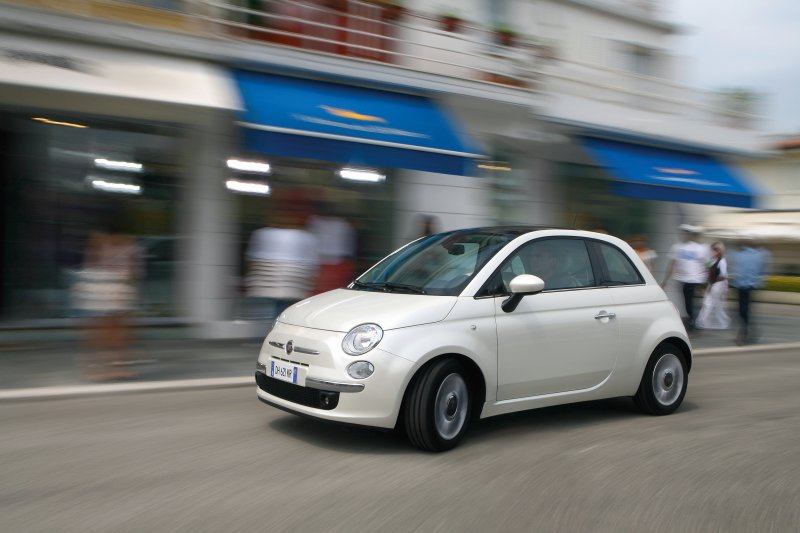
Not built for speed. Image credits Fiat Press.
On a more serious note, it drives, it does the job, but it will not bring a physically induced smile to your face, if you happen to generously apply the term petrolhead to your vehicular capabilities. The gear lever is fun and precise, and you will enjoy shifting. Shift it, shift it real good. The reverse gear comes with the ring lock.
Anyhow, I had the car at my disposal for four days, roughly 250 km and all types of commute, including city packaged with traffic and motorways. Lashing rain to help with the testing. Again, as you may have noticed from the visual hints earlier, the driving was conducted on the primitive, deprived 19th century roads of the British kingdom, with everything on the wrong side.
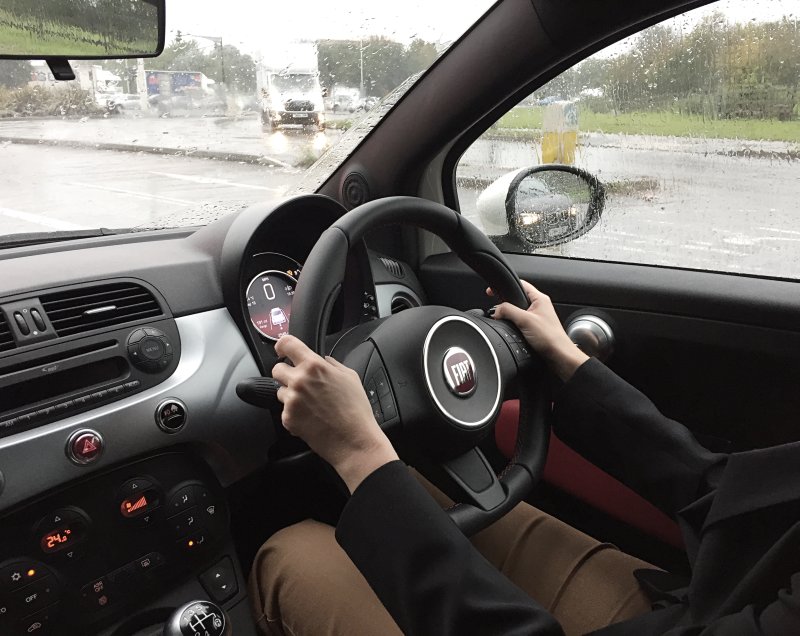
Doing what the English do best - queuing in traffic.
The car's small size aids handling the narrow carriageways the British call roads. You slink through traffic with ease, you bullet aim and go, and you can squeeze through where others struggle. Whatever maneuver you think of, it's doable. Parking is also a delight. Compare that to the BMW 330d test, and it's like navigating a ship through a fjord versus flying over it. Metaphorically speaking. Fiat 500 can't fly. Duh.
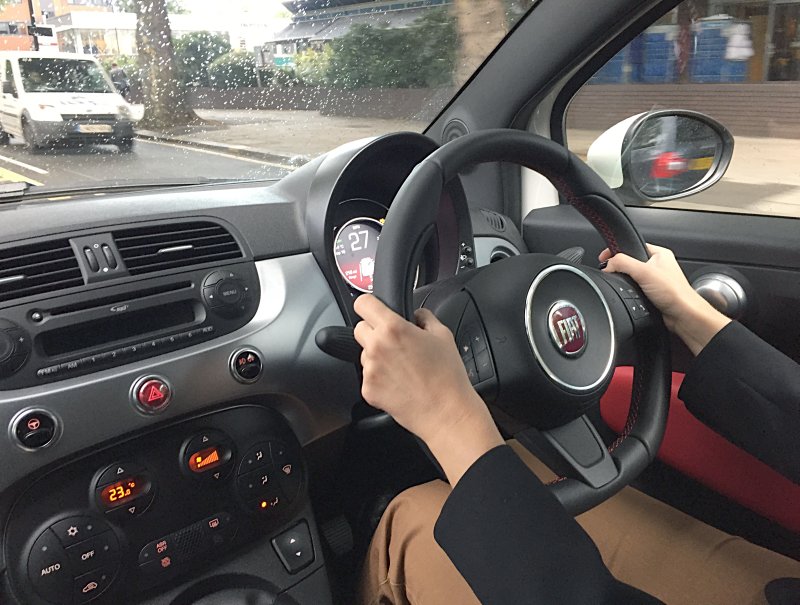
City conditions, good.
Once you leave the discomfort of the city, and you hit the highway, Fiat 500 shows its true colors other than the pearly white of its exterior skin. It's an okay car, but it will not amaze you. The acceleration is sluggish, and you need to floor it for quite a bit before magic happens. The same thing happen in Adam. However, Adam had a little more bite in the lower range, but to be fair, it also had a bigger engine. The 1.2-liter Fire unit in the 500S did its job well, but it wasn't remarkable. The short wheelbase means the cars skips and jumps over undulations. The lateral grip is also mediocre. You cannot slam it into the corners. You must be gentle. This is latte macchiato, not muddy black coffee. Again, compared to Adam, 185/55 allows for ever so less traction than 195/55.

Highway conditions, not so good.
The button that features the steering wheel logo for some reason has a bunch of functions. It makes the steering wheel slightly heavier and makes the throttle pedal ever so slightly more responsive, especially outside the town, resulting in a better fuel consumption. Yes, you'd assume lethargy is the way to go, if you're on a holy mission of saving fuel, but not with small engines, which often struggle to deliver, and sometimes revving them up to speed makes more sense than burbling around, fighting all them torques. Hence, without consulting the manuals and online brochure, I label thee button the City Mode. Perhaps it is the official name. Fiat forums call it the Girly Mode, but that's silly. However, I can understand why it would appeal to some drivers. The steering is light enough either way. Artificial, too.

Un buttono nel disablere di steering wheel. Or something.
Consequently, when you take everything into account, then in the final analysis it is probably true to say, that at the end of the day, in general terms, you would probably find that, not to put too fine a point on it, Fiat 500S drives like you would expect an underpowered, highly metro car to drive. It's practical, it's cool, but not very engaging. The fuel consumption is biggest victim.
With roughly a 60:40 motorway:city split, some use of aircon, two adults on board plus some baggage and camera equipment, a gentle driving regime, and moderate traffic jams, the little Fiat ate through about 8 liters of fuel per 100 km/h. This is quite a lot for such a small thing. This is worse than what Adam did, but to be fair, the driving conditions were better back then. Accounting for some of the discrepancies, Fiat 500S is still a thirstier beast, and that comes from the severe power deficiency, which require a lot of foot down action.
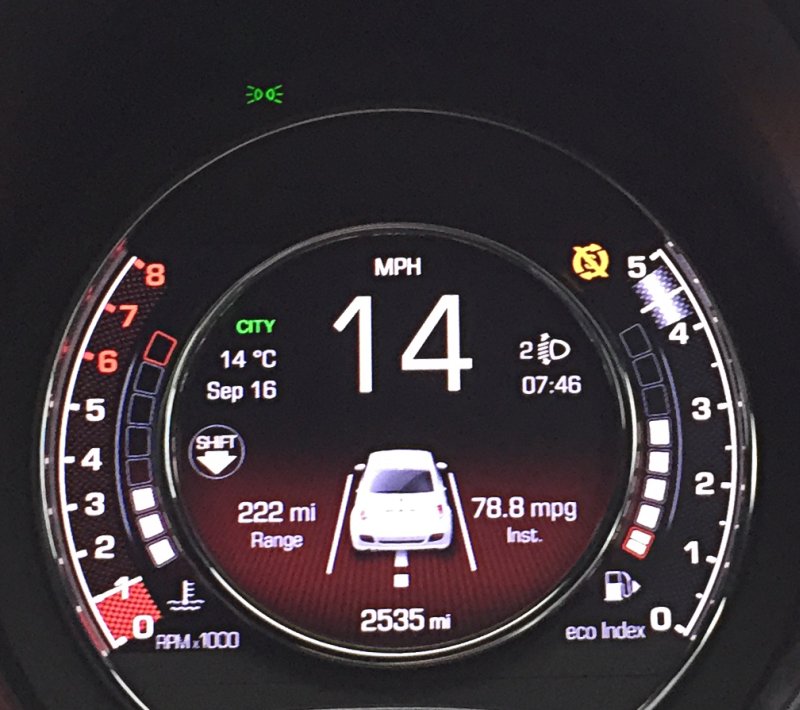
The all too digital speedo tells me there's 5/8 of the 35 liter tank left, for a range of 355 km. That is
about
6 liters per 100 km. At this point, the car had mostly done motorways, and was now plodding in town. I have
to apologize for the medieval units that the owner prefers. Soz.
Problems and niggles (non la faccio finita)
Just some small observations, probably caused by the owner's gentle negligence. The boot lever squeaks, and the wipers make a weird sucking noise whenever they swipe the first time. Other than that, everything else was in order and functioning well. For a car that's barely done 4,050 km, that's fine.
Conclusion (ma incrocio le dita e mi bevo un cafe)
Not all cars are created equal. In the case of our Fiat 500s, it's a fashion statement, a status symbol, a chic accessory, and a well-rounded urban commuter with a less than desirable drive and ergonomics. The focus is on the visual side of things, and it's done spotless. High quality materials, impeccable looks, a perfect aura of familiarity and timeless class. Nothing to fault on the static side of things, except maybe the price tag, which is expected for the premium you get with the brand.
On the dynamic side, Fiat 500S with a 1.2-liter engine isn't exactly what you want if you care about driving. In the best case, you probably want the small TwinAir turbos, or maybe the pimped up Abarth version. But the low-end engine in this model is only there to help you get from one point to another at a faster pace than walking, and it has nothing to do with how graceful, fast or grippy you are on the road. Quite the contrary. But then, given the subtle spoken and unspoken demographic hints embedded in this car, it's not surprising.
In the end, the same woes that plagued Adam come to bear here. Fiat 500S looks better, but Adam drives better. Price isn't in either one's favor, really, so you will choose that which beckons your heart the most. When it comes to creating that emotion, few cars do it with more success than the revitalized legend called Cinquecento. That alone gives it enough leeway so you may forget its faults and foibles. For keen drivers, there's a catch. Overall grade, something like 7.5/10.